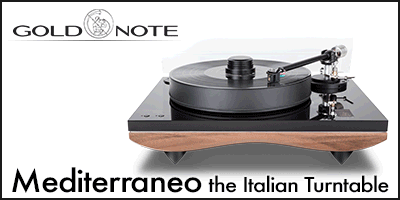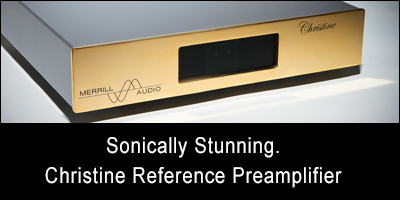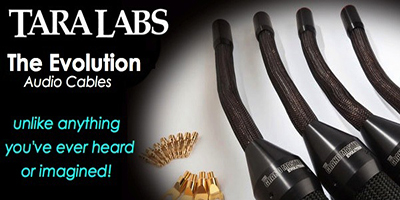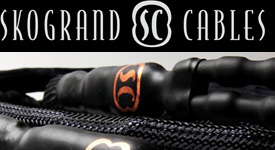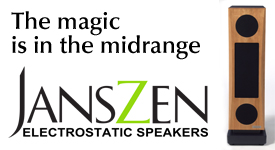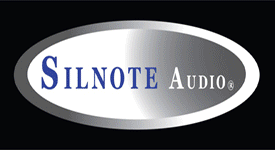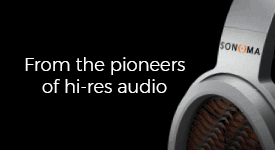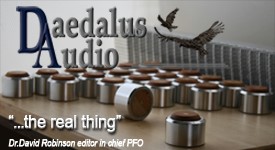Last night I installed the fresh out of the box Sophia Electric blue-glass KT88-ST long-life vacuum tubes into the new Leben CS600X, that's currently powering my vintage Altec A5 Voice of the Theatre loudspeakers in my audio-visual system.

Sophia Electric KT88-STs in the Leben CS600X integrated amplifier.
I'm running the Sophia Electric KT88-STs with cathode resistor and plate voltage settings used for 6L6GCs, which according to Leben is a setting suitable for KT88s (see table below).
With KT88s, Leben has said that you can also set the plate voltage the same as for an EL34, but I'll wait until I find out exactly what the plate voltage is in the two settings for the switch before I try that (more on this in a moment).

Straight out of the boxes these KT88-ST vacuum tubes sounded rich, natural, transparent, and much better than the stock Electro-Harmonix EL34EH tubes (photo below), which actually sound pretty good in their own right.

Stock Electro-Harmonix EL34EH tubes in the Leben CS600X.
I spent some time corresponding with Richard at Sophia Electric this morning to find out some more details about these intriguing KT88-ST vacuum tubes. I always enjoy discussing vacuum tubes with Richard, I always learn something new from him!

Sophia Electric KT88-ST vacuum tubes.
Here's some of what Richard shared with me this morning.
"Here are some historical prospectives about KT88 tubes: The KT88 tube is very important in the history of vacuum tube amplification, as important as the contribution of the Western Electric 300B in the history of cinema voice reproduction."
"KT88 tube delivers an affordable solution for more power: 50-60W for one pair of KT88s in push-pull, or 100-120W for a quad of KT88 tubes in parallel push-pull. Before the KT88 tube was available, to get this kind of power it had to be done with an 845/211 in a push-pull design."
"We all know 845/211 push-pull are operating at 1000-1200VDC and thus it would not be an affordable solution for street-level commercial use or for home use. By comparison, the KT88 tube can be operated at under half of the 845 tube operating DC voltage - about 500VDC - to achieve the same power. Thus, the production requirements and costs are much lower."
"The KT88 tube is a European design. The American tube for the same time period is the 6550, which progressed through the 6L6-5881-6550 tube bloodline. The best-known vintage KT88 tube has been the made in England Genalex KT88, designed for commercial use."
"The KT88 tube was not a particularly popular consumer tube during vintage times as speakers were efficient. American consumers were satisfied with 6V6 push-pull amps (10W) and 6L6 push-pull amps (20W). Generally speaking, Europeans had less space for listening than Americans, so most Germans used radios instead of an amp & preamp combination like the American audiophiles did. Rich Europeans may have had EL84 amps, and the British liked KT66 and El34 amps for their elite listeners. The KT88s were exceptional tubes designed mostly for commercial business purposes before the age of solid state started in late 1950s."
"When tube audio first revived in Far East in the mid 1980’s, the KT88 was re-discovered for its attractive bigger tube, and bigger tube sound, than were available from typical 6V6/6L6/EL34 tubes. Smart businessman rushed to China, Eastern Europe, and even Russia to get factories to produce KT88 tubes to meet the demand for KT88. By the time of late 1990’s, every tube enthusiast had fancied a KT88 tube amp." (How true. Way back when I bought a pair of the Quicksilver Audio KT88 mono amplifiers, which were my first tube amplifiers. - Jeff)
"Unlike the old American 6L6 tube, which was well designed and tweaked before its debut in 1940’s, the KT88 tube itself was invented towards the end of tube era, the early original design was rushed to the market without much testing. Simply there were not many users to test the tube during vintage times. The true KT88 tube has relied on later refinement to give it its current tube form."
"Amplifier makers and early adopters - as well as tube factories - surely have learned a lot of lessons in the early stage of development before late 1990’s. The KT88 is a big current tube, yet still has its dissipation limit. Those who do not follow the tube data sheet limits will have the tubes burned fast and died early."

Tube data sheet from Richard.
Note: As Richard has said, be careful about observing the operating points of the KT88 tubes in your amplifiers, as you can't necessarily swap them with other tubes like you can in the Leben CS600 / CS600X that was designed to allow for those sorts of substitutions.
"Sophia Electric has made several generations of KT88 tubes prior to Blue Glass KT88-ST tube model. Every generation of Sophia Electric KT88 tubes follows the European KT88 tube model format for direct replacement purpose for existing amps."
"Sophia Electric’s blue glass KT88-ST was a result of several innovations in tube design and material science as well as acoustic feedback studies. KT88-ST is patented in the US and in China. You have to listen to it to know what the magic is about."
"In Richard Wugang’s own words: Magic is the night and day difference Sophia Electric tubes deliver in sonic improvement over the other common tubes. The Sophia Electric family of tubes have delivered clearly defined sound stage, pin point imaging, super high resolution as well as magical musicality in tube audio that was not possible before Sophia Electric. Once you listen to Sophia Electric tubes, then you will have Sophia Electric tubes for life."
"How does the Sophia Electric KT88-ST tube compare to the vintage Genalex KT88 tube? The answer is the Sophia Electric KT88-ST tube is better by a big margin, and is a lot of better in every area. It is a new design with many refinements available due to modern technology, not to mention that you can't find vintage Genalex KT88 tubes that are tested and matched in pairs or quads. Also, Sophia Electric is the first in the industry to offer a one year warranty on tubes. There is no tube manufacturer or tube brand that dared to do so before - or after - Sophia Electric."
"A word of caution: Do not use plate and screen grid voltages over 600VDC. It is against the law of physics. The max dissipation is only 42W, and the screen grid has much less tolerance. Please refer to the tube data for details."
"This generation of blue glass Sophia Electric tubes are the best of the current production KT88s and of the NOS vintage KT88s."
"The Sophia Electric KT88-ST is bigger, heavier, and more powerful than the Sophia Electric EL34-ST. Considering the extra cost to manufacture it, the KT88-ST is only $25 more in price, so KT88-ST is a great buy. The KT88-ST is one of my favorite tubes by Sophia Electric."

A quad of Sophia Electric blue glass long-life KT88-ST vacuum tubes for the Leben CS600 / CS600X.
Many thanks to Richard for telling us more about his Sophia Electric KT88-ST tubes. I'll be asking more questions of Richard about his Sophia Electric KT88-ST tubes, so if you have any questions about them, let me know, and I'll ask Richard about it and follow up in a future post.

Sophia Electric EL34-ST
For example, in an earlier post I mentioned that Richard had told me about the Sophia Electric EL34-ST:
"Electrically the specifications of the EL34-ST are same as the vintage Mullard, with a heater (filament) voltage of 6.3V AC, a heater current of 1.5A, a maximum plate voltage of 800V, and a maximum power dissipation of 25 watts."

Sophia Electric KT88-ST
I asked Richard about the KT88-ST specifications, and this is what he told me:
"Electrically the specifications of the KT88-ST are same as the vintage Genalex, with a heater (filament) voltage of 6.3V AC, a heater current of 1.6A, a maximum plate voltage of 600V, and a maximum power dissipation of 42 watts."
The important thing to notice is that for the EL34-ST the maximum plate voltage is 800V, but for the KT88-ST the maximum plate voltage is lower at 600V.
Update: However, the Leben CS600X plate voltages are 430V +/-10% for the 6L6, and 380V +/-10% for the EL34, so both settings are well below the maximum plate voltage of 600V for Sophia Electric KT88-ST. In a future post I'll be reporting on the effect of both plate voltages on the Sophia Electric KT88-ST's performance.

Sophia Electric 300B and KT88-ST.
I'll tell you what though, Richard was right on when he said the KT88-ST tubes sound a lot like a 300B tube, and the Sophia Electric KT88-ST's tonal balance in the Leben CS600X kind of reminds me of the tonal balance of the WE 300B tubes that I tried in my Sophia Electric 300B and Fi 300B mono amplifiers way back when. That's a good thing.

Fi mono amplifier with WE300B.
For those who are wondering, the Sophia Electric KT88-STs - like the Sophia Electric EL34-STs - are too tall to allow the use of the top cover on the Leben CS600X.
Sorry about that. I keep hoping Leben will revise the top cover to allow for the use of taller vacuum tubes while keeping the cover in place.

Sophia Electric KT88-STs in the Leben CS600X.
My first listening impressions are brief given there's no run-in time on the Sophia Electric KT88-ST tubes yet.
My first listening impressions of them are are quite favorable, however, so that bodes well for what they'll sound like with more time on them.

Sophia Electric KT88-ST
After I accumulate more run-in time on the Sophia Electric KT88-ST tubes in the Leben CS600X I'll report back with more detailed listening impressions.
As always, thanks for stopping by, and may the tone be with you!

